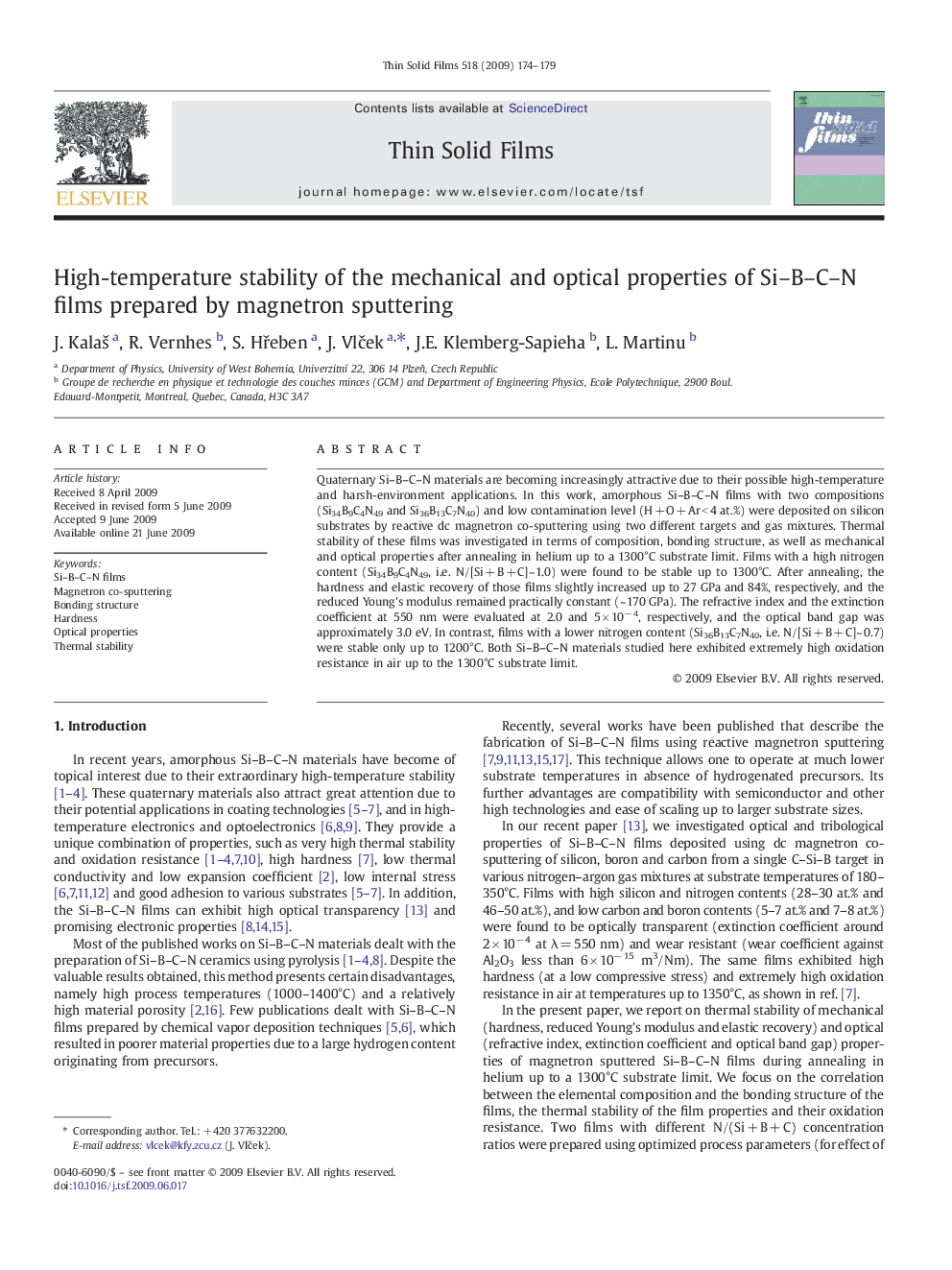| Article ID | Journal | Published Year | Pages | File Type |
|---|---|---|---|---|
| 1668796 | Thin Solid Films | 2009 | 6 Pages |
Quaternary Si–B–C–N materials are becoming increasingly attractive due to their possible high-temperature and harsh-environment applications. In this work, amorphous Si–B–C–N films with two compositions (Si34B9C4N49 and Si36B13C7N40) and low contamination level (H + O + Ar < 4 at.%) were deposited on silicon substrates by reactive dc magnetron co-sputtering using two different targets and gas mixtures. Thermal stability of these films was investigated in terms of composition, bonding structure, as well as mechanical and optical properties after annealing in helium up to a 1300°C substrate limit. Films with a high nitrogen content (Si34B9C4N49, i.e. N/[Si + B + C]~ 1.0) were found to be stable up to 1300°C. After annealing, the hardness and elastic recovery of those films slightly increased up to 27 GPa and 84%, respectively, and the reduced Young's modulus remained practically constant (~ 170 GPa). The refractive index and the extinction coefficient at 550 nm were evaluated at 2.0 and 5 × 10− 4, respectively, and the optical band gap was approximately 3.0 eV. In contrast, films with a lower nitrogen content (Si36B13C7N40, i.e. N/[Si + B + C]~ 0.7) were stable only up to 1200°C. Both Si–B–C–N materials studied here exhibited extremely high oxidation resistance in air up to the 1300°C substrate limit.
